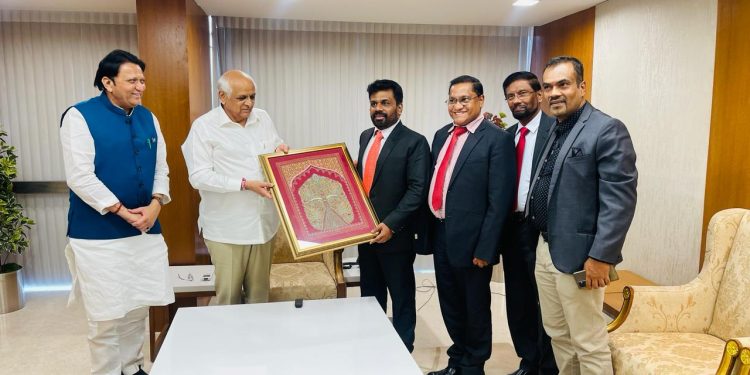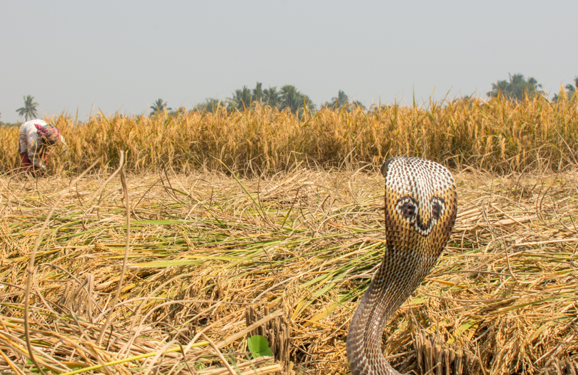KAMALIKA PIERIS
Sarath Weerasekera once angrily invited the Bar Association of Sri Lanka (BASL) to visit the North and observe how the Buddhist ruins are destroyed and Chaithyas razed to the ground. The archaeological officers are threatened with death. Court cases are filed, and in the case of Kurundi, they obtained the help of Mullaitivu lawyers to delay renovations and destroy what has been already done, he told the lawyers.
The Buddhist lobby is well aware that Buddhist places of worship have been attacked and vandalized .A Buddhist shrine room erected by the army in its camp at Kanagarayakulam, Mankulam, was vandalized in 2016 and Buddha statue broken into pieces. This was not an isolated incident, the Buddhist lobby said.
The Buddhist lobby also knows that Buddhist ruins in the northeast are in need of protection. Panama pattu forest range is full of archaeological ruins. There is no protectionfor any of it, Ven. Ellawela Medhananda said.
Selected Buddhist ruins in the north and east are protected by the Sri Lanka army. The army is looking after the Buddhist ruins at Kantarodai. Kalladi puda bima, in Batticaloa was discovered and protected by the armed forces during the Eelam war, reported Medhananda. A Buddha statue has come up in Sambaltheevu with police protection, complained the Tamil Separatist Movement. Delft has Buddhist ruins including a chaitya. As long as the navy is in Delft these ruins will be safe, said analysts..
Many Buddhist ruins are not registered in the Department of Archaeology as archaeological monuments. Medhananda said that most of the ruins discovered by him are not registered by the Department. Thottama, Manthottama, Pannala oya and Ambalan oya in Eastern province has archaeological remains which are not registered, he said.
The Buddhist lobby is aware of this. Surveyor General Ariyaratne Dissanayake said in February 2022 that a total of 484 requests have been received for surveying of archeological sites in the Eastern Province. Surveys of 64 sites have been completed and plans are being prepared for 22 sites.
At the Kurundi vihara demonstration, in Colombo in 2023, a member of the public accosted the demonstrators and said that issues like Kurundi would not arise, if Department of Archaeology did its job efficiently and gazetted these ruins. His observation was a valuable one, but he was pushed aside. This was shown on television news.
The Archaeology Department holds records for the many sites it has inspected over the years. Like the ruins, the records are also in danger. They vanish. There were 11 cave inscriptions near Kundikudichchi Aru. The Ampara Kachcheri held the file on this. This file is now missing, said Medhananda. The records held in the Department of Archaeology of Buddhist ruins converted to Kovils went missing.
The Buddhist lobby reacted strongly to the Tamil Separatist attacks on Buddhist ruins in the north and east. A Fundamental Rights application was lodged in 2016 challenging the vandalizing of Buddhist statues in north. The Buddhist archaeological sites in Northern Province are under threat said the petitioner. There was specific reference to the shrine room at Mankulam but the petitioner stated that this was not an isolated instance. Over the past few months there have been constant demands for the removal of Buddhist statues from Northern Province.
In October 2019 Attorney-at-Law Dharshana Weraduwage filed a Fundamental Rights petition, in the Supreme Court, seeking an order directing authorities to investigate the imminent danger to the Buddhist religious sites and several archaeological sites situated in the Northern and Eastern Provinces.
The petitioner states that he was shocked and dismayed to hear the news that a certain group had bulldozed an area in Maligai, Omanthai, Vavuniya, which had contained archaeological memorials and ruins that belonged to the Anuradhapura period. The petitioner further sought an order declaring that fundamental rights guaranteed by the Constitution under Articles 10, 11, 12 (1), 12(2), 14(1) (e) and 14(1) (f) have been violated by the respondents owing to their inaction.
In May2023 The Union of Organizations for the Protection of National Heritage handed over to Prime Minister DineshGunawardena its report on destruction of northern and eastern archaeological sites and interference with conservation activities. Ven. Maduru oye Dhammissara , Dr. Gunadasa Amarasekara, Kalyananda Thiranagama and others participated in this event on behalf of the Union.
In June 2023, four Members of Parliament, Udaya Gammanpila, Channa Jayasumana, Jayantha Samaraweera and Sarath Weerasekera, sent a letter to President asking him to appoint a Presidential committee to study and report on the destroying of Buddhist ruins, now going on in the north and east.
They also handed over a letter to Speaker Mahinda Yapa Abeywardena to appoint a Parliamentary Select Committee (PSC) to investigate and report to Parliament on the destruction of archaeological monuments in the North and East.
Large scale destruction of archaeological monuments is taking place in the North and East, said Samaraweera, speaking to the press. We are requesting the PSC to investigate the matter and submit a report to Parliament within six months of the Committee’s first meeting.
The Buddhists did not tolerate intimidation. Here is one example. In 2018 five Students of the faculty of Business studies of the University of Jaffna, four Sinhalese, one Tamil, made a complaint to Supreme Court. Five Writ applications were filed by them.
The petitioner students said they were prevented from entering the campus premises because they had attempted to install an enclosure to house a Buddha statue in their hostel premises. They had been suspended. The authorities claimed permission had not been obtained.
The petitioners have alleged arbitrary treatment and a denial of their right to abide by the religion of their choice and asserted a violation of Article 12(1), 12(1), and 14(1) (a) of the Constitution of Sri Lanka.
They have requested the Court to direct the VC to allow them to enter the university premises and to declare that their fundamental rights have been violated. They requested the Court to issue a writ to quash the decision of the university authorities to prevent them from attending lectures.
The Supreme Court in October 2018 issued notice on the Vice Chancellor and several other officials of the Jaffna University. In February 2020, Manohara de Silva, PC, who appeared for the students, told the Court of Appeal, that the students had been prevented from entering the university premises from April 18, 2018. It was without basis and was unlawful. Attorney General then informed the Court that the Jaffna Campus authorities would not hold a disciplinary inquiry against five undergraduates who were involved in the matter.
Tamil Separatist Movement is desperate to stop work on Buddhist remains in the north and east. They use various strategies. Department of Archaeology staff working on Buddhist ruins were harassed and obstructed. Chinthaka Sandaruwan, an official of the Department of Archaeology, said on You Tube We have problems all over the island over ruins. We have these problems all over not only in Kurundi.
When they find that they cannot chase the Department of Archaeology away from a site, the Tamil Separatist Movement then turns to the two law enforcement agencies, the police and the magistrate courts. Kurundi excavation was charged with disturbing the peace.
The Tamil Separatist Movement has the advantage there. The police, the lawyers and the Magistrate are all Tamil. The proceedings in court were exclusively in Tamil with no provision for Sinhala. The court order was also given in Tamil.
This was accepted without protest by Kurundi group. There was no protest about this, when they spoke to television cameras. There was no insistence that the Kurundi matter must be discussed in Sinhala, at Mullaitivu Magistrate court. The Magistrate knew Sinhala. The Buddhist lobby seems to have accepted that the law courts in the north and east are entitled to be Tamil only.
Their solution was to get this subject transferred to Colombo. In July 2020 it was reported that Buddhist clergy has asked that land disputes in the North-East connected to Buddhist matters be transferred to courts in the South.
The Maha Sangha met President Gotabhaya in July 2020 and requested the President to reassign Northern and Eastern matters involving historical sites to the law courts in Colombo. President Gotabhaya decided that the Antiquities Ordinance should be amended, so that land disputes in the North-East connected to Buddhist colonization be transferred to courts in the South, as requested by the Maha Sangha.
President Gotabhaya set up an all-Sinhala committee comprising Maha Sangha and experts in the field to study how the amendments should take place. This amendment, which would seek to strengthen the protection of heritage sites, is seen by the Tamil Separatist Movement as a step towards Sinhalisation, Tamil Guardian said.
At the meeting President gave orders to the Archaeology Department to punctually respond to the Maha Sangha’s wishes to protect historical and archaeology locations.” President also looked at increasing funding to the Department of Archaeology. Also whether to use the Civil Defense Force to help conserve archaeological sites. President said that proposals by the Maha Sangha on antiquities and archeological sites will be forwarded to the Presidential Task Force’.
IN June 2020 President Gotabhaya appointed a Task Force on Archaeological Heritage Management in the Eastern Province (PTF) this was a landmark event.
This Task Force was asked to i) Identify sites with archaeological importance in the Eastern province. ii) Identify and implement and appropriate program for the management of archaeological heritage by conserving and restoring such identified sites and antiquities.iii) Identify the extent of the land that should be allocated for such archeological sites and take necessary measures to allocate them properly and legally . iv) Preserve the culture value of sites of archaeological importance and promote the uniqueness of Sri Lanka, both locally and internationally, and make recommendations for the promotion of such heritages.
According to the statement issued by the President’s Office, Ven. Ellawela Medhananda was appointed as the Chairperson of the Task Force. The Chief Prelate for the Northern and Eastern provinces, Chief Sanganayake of Thamankaduwa Direction, and Chief Incumbent of Arisimalai Aranya Ven. Panamure Thilakawansha Thero, Major General (Retired) Kamal Gunaratne, Secretary to the Ministry of Defence, Dr. Senarath Bandara Dissanayake, Director-General of Archaeology, Ms. Chandra Herath, Land Commissioner General, Ms. A.L.S.C. Perera, Surveyor General, Prof. Raj Kumar Somadeva, Senior Lecturer, University of Kelaniya, Prof. Kapila Gunawardena, Medical Faculty, University of Peradeniya, Deshabandu Thennakoon, Senior DIG, Western Province, H.E.M.W.G. Dissanayake, Provincial Land Commissioner, Eastern Province, Dilith Jayaweera, Chairman of Derana Media Network have been appointed as other members.
In 2021 two other members were appointed, lecturer Mufhisal Abubakkar and retired Northern Province Chief Secretary A. Pathinathan. Pathinathan said that he had not given his consent and that he would not accept the appointment since he did not know the subject.
There was strong opposition to this Task force form the Tamil Separatist Movement. An all Sinhala Buddhist task force including military personnel has been set up, they complained. The Task Force contains racists, Buddhist monks and alleged war criminals . No members from either the Tamil or Muslim community have been included, even though they collectively make up over 70% of the Eastern Province’s population.
Tamils fear that their land will be appropriated by the Task Force. Tamils have voiced fears about further appropriation of land by the state through the Task Force, as they are empowered to identify the extent of land that should be allocated for archaeological sites and take necessary measures to allocate them properly and legally.
Rajan Philips commented on the Task Force. The appointment of a Presidential Task Force for Archaeological Heritage Management in the Eastern Province, with its oddly mixed composition, has created political ripples not only in Sri Lanka but also outside the country, he said. The Task Force excludes not only Tamil and Muslim archaeologists but also renowned Sinhalese archaeologists, said Philips.
There is the question of whether a Task Force on archaeology is needed at the moment in the midst of a global pandemic and whether aPresidential Task Force is a suitable cultural mechanism for preserving cultural heritage.
The matter could have been left to the Department of Archaeology, one of the oldest and well-respected government departments. It has a professional reputation that extends beyond Sri Lanka. It has a well-established Exploration and Documentation Division that mandates Archaeological Impact Assessments to be undertaken for any development project on a parcel of land exceeding 0.25 hectares. If the Department is well funded and if there is no interference from politicians there should not be any danger to Sri Lanka’s heritage resources, concluded Philips.
Tamil National Cultural Federation expressed strong opposition and dissatisfaction over this Task Force. Forming a Presidential Task Force led by Military Officials, under the direction of Maha Sangha, by the President, will lead to expelling Tamils from these areas, under the guise of being Buddhist sites, to Buddhistize these areas, and to undertake massive Sinhala colonization, said TNCF. This should be stopped. All Tamil people should express their strong opposition to the President’s statement.
In 2021, the Tamil Separatist Movement wrote to Hindu organizations in UK saying that the appointment of the Archeological Heritage Management Task Force has energized Sinhala nationalists and they are on spree to hurriedly fence archaeological sites . (Continued)
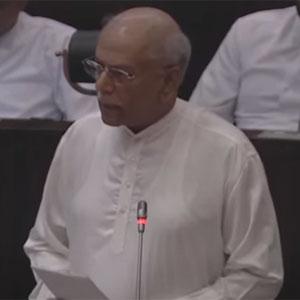 Parliament, March 6 (Daily Mirror)- The gross salary of the lowest ranking employee of the Central Bank, that of an Office Assistant – Grade 1, has been increased by 29.53 per cent up to Rs. 188,827, Prime Minister Dinesh Gunawardane said today.
Parliament, March 6 (Daily Mirror)- The gross salary of the lowest ranking employee of the Central Bank, that of an Office Assistant – Grade 1, has been increased by 29.53 per cent up to Rs. 188,827, Prime Minister Dinesh Gunawardane said today.
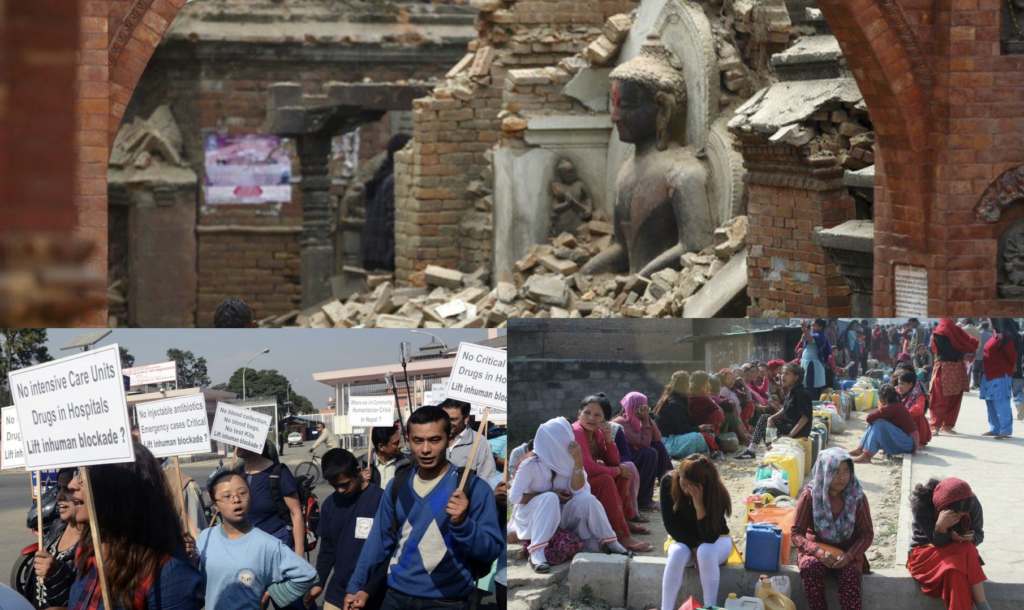
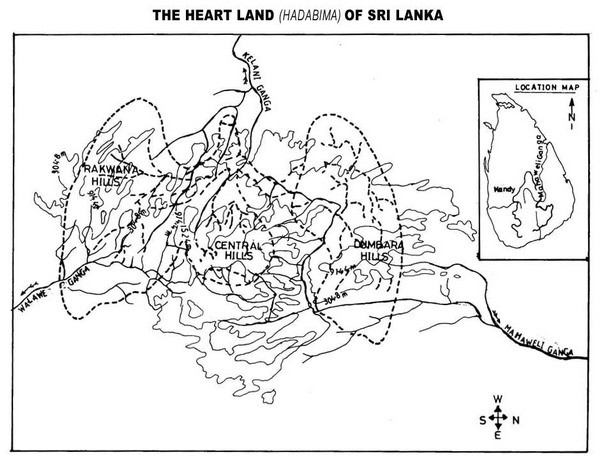
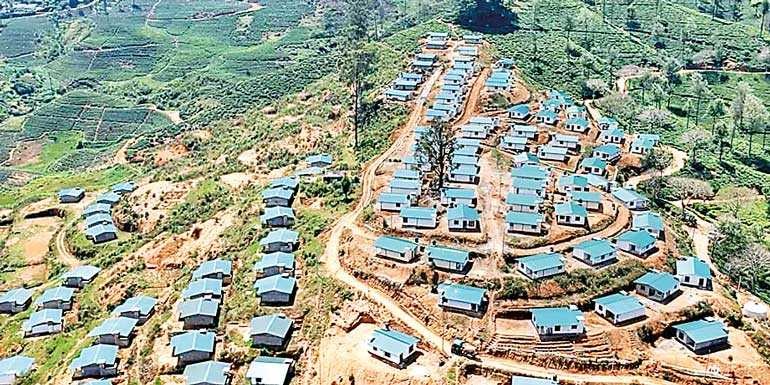
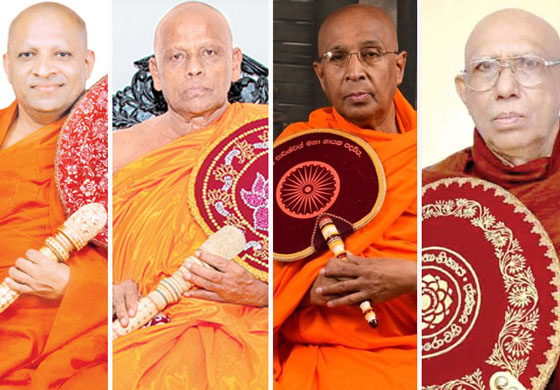 භික්ෂු ශාසනයෙන් නෙරපා හැර ඇති මීවනපලානේ සිරි ධම්මාලංකාර නමින් පෙනී සිටිමින් බුද්ධ දර්ශනය විකෘති කරමින් උතුම් බුදු දහමට නිගා කරමින් ශාසන විනාශකාරී කටයුත්තක නියැලී සිටින සිරිසේන සපුතන්ත්රි නැමැත්තාට එරෙහිව වහාම නීතිය ක්රියාත්මක කරන ලෙස ත්රෛයිනිකායික මහා නා හිමිවරුන්ගේ අත්සනින් යුතුව ජනාධිපතිවරයාට ලිපියක් යවා ඇත.
භික්ෂු ශාසනයෙන් නෙරපා හැර ඇති මීවනපලානේ සිරි ධම්මාලංකාර නමින් පෙනී සිටිමින් බුද්ධ දර්ශනය විකෘති කරමින් උතුම් බුදු දහමට නිගා කරමින් ශාසන විනාශකාරී කටයුත්තක නියැලී සිටින සිරිසේන සපුතන්ත්රි නැමැත්තාට එරෙහිව වහාම නීතිය ක්රියාත්මක කරන ලෙස ත්රෛයිනිකායික මහා නා හිමිවරුන්ගේ අත්සනින් යුතුව ජනාධිපතිවරයාට ලිපියක් යවා ඇත.